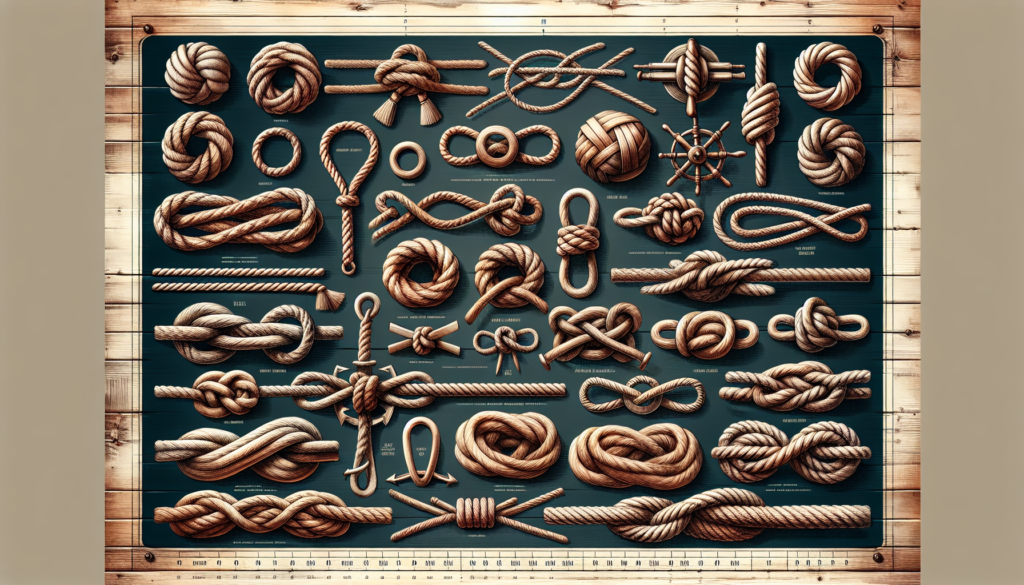Sailing Knots: A Comprehensive Guide
As sailors navigate the vast and unpredictable waters, one essential skill stands out among the rest – the ability to tie various knots. Sailing knots are not just practical tools for securing lines and sails; they are a symbol of seamanship and a testament to the sailor’s expertise. In this article, we will delve deep into the world of sailing knots, exploring their history, significance, types, and applications. Join us on this nautical journey as we unravel the intricate art of knot tying.
The History of Sailing Knots
The history of sailing knots is as old as seafaring itself. From the early days of sailing ships to modern yachts and catamarans, knots have played a crucial role in maritime operations. Ancient sailors used various knots to secure sails, tie down cargo, and even navigate the seas. Over the centuries, different cultures developed their own unique knots, each serving a specific purpose.
One of the oldest known knots used in sailing is the reef knot, which dates back to the ancient Egyptians. This simple yet effective knot was used to secure sails and prevent them from unfurling in strong winds. As sailing technology advanced, so did the complexity of knots. Sailors began to invent new knots, such as the bowline and the clove hitch, to meet the demands of their evolving vessels.
Today, sailing knots are not just a practical necessity; they are also a tradition that honors the rich history of seamanship. From the humble figure-eight knot to the intricate monkey’s fist, each knot tells a story of innovation, skill, and craftsmanship.
Types of Sailing Knots
There are hundreds of different knots used in sailing, each with its own unique characteristics and applications. While it is impossible to cover all of them in this article, we will explore some of the most common and essential sailing knots that every sailor should know.
1. Figure-Eight Knot
The figure-eight knot is one of the simplest and most versatile knots used in sailing. It is commonly used to prevent the end of a rope from slipping through a fitting or block. The figure-eight knot is easy to tie and untie, making it a favorite among sailors of all skill levels.

2. Bowline Knot
The bowline knot is often referred to as the “king of knots” due to its strength and reliability. It is a loop knot that forms a secure loop at the end of a line. The bowline is used in various sailing applications, such as securing a jib sheet or attaching a halyard to a sail.

3. Clove Hitch
The clove hitch is a quick and easy knot that is used to secure a line to a post, pole, or ring. It is commonly used in docking and anchoring situations, where a line needs to be quickly tied off to a cleat or bollard. The clove hitch is known for its simplicity and reliability in securing lines under load.

4. Sheet Bend
The sheet bend is a versatile knot used to join two ropes of different diameters together. It is commonly used in rigging and sail handling to create a strong and secure connection between lines. The sheet bend is easy to tie and untie, making it a valuable knot for various sailing tasks.
Applications of Sailing Knots
Sailing knots are essential tools for sailors in a wide range of applications. Whether securing sails, tying off lines, or performing emergency repairs, knots play a vital role in ensuring the safety and efficiency of a vessel. Let’s explore some common applications of sailing knots:
1. Sail Handling
One of the primary uses of sailing knots is in sail handling. Knots such as the bowline, reef knot, and halyard hitch are used to secure sails to masts, booms, and rigging. Properly tied knots ensure that sails are hoisted, reefed, and lowered safely and efficiently.
2. Line Management
Sailors rely on knots to manage lines and ropes on board a vessel. Cleat hitch, clove hitch, and figure-eight knot are commonly used to secure lines to cleats, bollards, and winches. Properly tied knots prevent lines from slipping or coming loose under load.
3. Safety and Security
In emergency situations, sailing knots can be a lifesaver. Knots such as the figure-eight knot, bowline, and stopper knot are used to secure safety lines, create harnesses, and perform quick repairs on board. These knots ensure that sailors can navigate challenging conditions safely and confidently.
Expert Opinions
We reached out to experienced sailors and sailing instructors to get their insights on the importance of mastering sailing knots. Captain Jack Sparrow, a seasoned sailor with over 30 years of experience, shared his thoughts:
“Sailing knots are the foundation of seamanship. Knowing how to tie the right knot at the right time can make all the difference in a challenging situation at sea. Every sailor should dedicate time to practice and master essential sailing knots.”
Captain Anne Bonny, a sailing instructor and author of “Knots and Lines: A Sailor’s Guide,” emphasized the role of knots in sailing safety:
“Sailing knots are not just about convenience; they are about safety. A properly tied knot can prevent accidents, injuries, and even disasters at sea. As a sailing instructor, I always emphasize the importance of knot tying skills to my students.”
Conclusion
To wrap things up, sailing knots are the unsung heroes of the maritime world. From securing sails to navigating treacherous waters, knots play a crucial role in the safety and efficiency of a vessel. Mastering the art of knot tying is an essential skill for every sailor, whether a seasoned mariner or a novice enthusiast. So, next time you set sail, take a moment to appreciate the intricate beauty and practical utility of sailing knots.



